HILASE (Dolni Břežany, Czech Republic)
Research highlights
HiLASE
Institute of Physics AS CR, v.v.i. (IP-ASCR),
HiLASE, Prague, Czech Republic
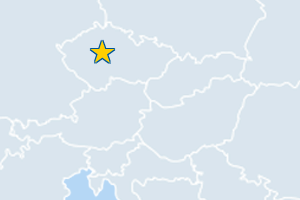
Contact: Tomáš Mocek
Laser Materials
By means of the Bivoj laser system, we have shown that large area monocrystals with optically bonded absorber cladding have similar performance to cladded ceramics, so far the only material for high-energy Yb:YAG lasers [Opt. Express 28, 3636 (2020)].
Plasma Physics
We have experimentally demonstrated the use of a nanosecond laser pulse from Bivoj for generation of 5-mm long and tens of microns wide elongated plasma channel in a gas-jet [Appl. Sci. 10, 4082 (2020)].
Laser Micromachining
The combination of a novel beam-splitting, focusing and monitoring module with the Perla laser emitting picosecond pulses at 515 nm resulted in efficient cutting and drilling of invar foil simultaneously by 784 beamlets, arranged in a matrix of 28 x 28 beamlets [Materials 13, 2962 (2020)].
Functionalisation of Materials
The Perla laser allowed efficient fabrication of functional superhydrophobic surfaces on carbon fibre reinforced plastics (CFRP) by IR and UV direct laser interference patterning [Appl. Surf. Sci. 508, 144817 (2020)].
Laser Processing
The fourth harmonics (257 nm) of Perla laser enabled crystallization of anodic amorphous TiO2 nanotube layers into a pure anatase phase, which is the most attractive among all titanium dioxide polymorphs for numerous photocatalytic applications [RSC Adv. 10, 22137 (2020)].
Projects performed by external users >>
Expertise
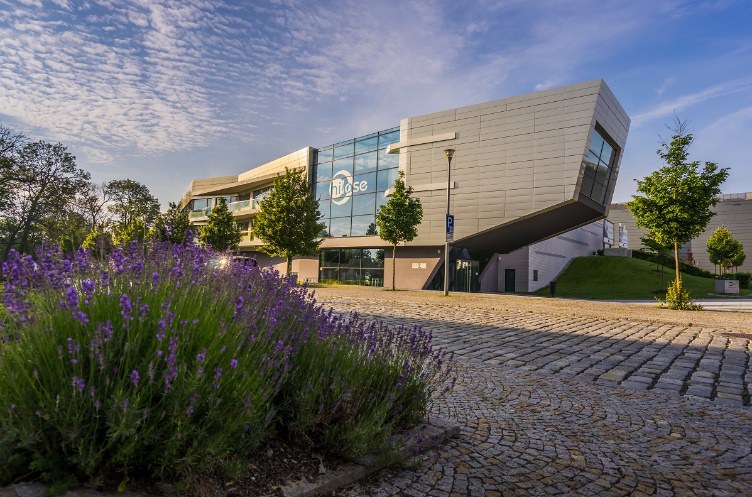
We develop and operate the next generation of high-power Diode Pumped Solid State Lasers (DPSSL), while at the same time, exploit these unique light sources for a wide range of hi-tech industrial applications, and thus serve as a bridge between the academic world and industry.
First operation of the single beam, multi-slab laser system Bivoj in 2016 demonstrated amplification of 10 ns pulses at 10 Hz pulse repetition rate to an energy of 105 J at 1030 nm, representing the world’s first kW average power, high-energy, nanosecond DPSSL. High-energy second and third harmonic generation at 515 nm and 343 nm are available as well. We also work on associated laser technologies, which include high-power optical isolators, adaptive optics, and characterization of laser materials at cryogenic temperatures. Efficient, high-energy, pulsed laser systems operating at high repetition rates are required for a wide range of commercial and scientific applications, including advanced materials processing, laser shock treatment of mechanical components, and pumping of repetitive petawatt-class lasers to generate high-brightness secondary radiation and particle sources.
We operate four high-power thin-disk Perla lasers at the fundamental wavelength of 1030 nm with optional frequency conversion setups for the generation of 2nd, 3rd, 4th, and 5th harmonic frequencies, and optical parametric generation / amplification system for longer wavelengths. They serve as an excellent and versatile tool for advanced industrial material processing applications, for example to drill precise hair-size holes, to improve the manufacturing of fast computer chips and large displays, and/or to create antibacterial functional surfaces.
Expertise in recyclable materials
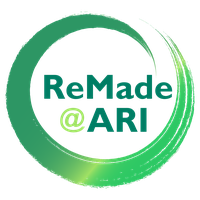 Within the framework of the circular economy, eco-design is a crucial topic in which our Laser Shock Peening (LSP) technology can play a significant role. LSP technology is used to extend the lifespan of components, thereby improving their life cycle assessment. This approach can have a highly positive impact on the environment, and the use of this technology for shared economy products is gaining importance as premature wear and tear occurs. LSP technology can also contribute to the principles of reduce, reuse, and recycle (3R) by offering repair possibilities.
Within the framework of the circular economy, eco-design is a crucial topic in which our Laser Shock Peening (LSP) technology can play a significant role. LSP technology is used to extend the lifespan of components, thereby improving their life cycle assessment. This approach can have a highly positive impact on the environment, and the use of this technology for shared economy products is gaining importance as premature wear and tear occurs. LSP technology can also contribute to the principles of reduce, reuse, and recycle (3R) by offering repair possibilities.
Further, our ultra-short pulsed lasers can be used to functionalise surfaces of a broad range of materials by fabricating micro- to nano-scale structures. Applications of such surface engineering, focused mainly on reduction of resources and consequently waste produced, include enhancement of battery electrodes for increased capacity, friction and wear reduction of metallic components or passive antibacterial surfaces. Turning the surface superhydrophobic, self-cleaning or with anti-icing properties without additional chemical treatment is possible as well.
>> Watch the Laserlab-Europe Talk 'Towards sustainability by applications of laser processing'
Services for industry
Photonics/Lasers, ICT, Semiconductors
Laser development - HiLASE has expertise in designing, developing and prototyping state of the art high intensity short and ultrashort pulsed laser systems. These laser systems find their application in material manufacturing over different industrial sectors such as water industry, electronics, semiconductors, medical devices, aerospace, automotive, food industry, etc.
Photonics/Lasers
Metrology - Expertise in performing LIDT measurements under radiation of high intensity short and ultrashort pulses and consulting related to development of new optical components and coatings. LIDT service is important for applications such as laser material interaction, optical, coating or laser design.
Aerospace, Nuclear industry
Materials processing - HiLASE provides expert feasibility studies related to LSP applications to improve metal components performances such as fatigue resistance, corrosion, erosion and cracking resistance, etc. LSP has applications over a wide range of industries, namely: aerospace, automotive, nuclear, marine and biomedical industry. By increasing operational time of metal components, LSP can significantly contribute to circular economy.
Semiconductors, Medical devices, Aerospace, Food Industry, Precision Manufacturing, High-Value Manufacturing, Electronics
Surface Processing, Laser micromachining - HiLASE disposes of state of the art high intensity ultrashort laser systems to provide expertise in feasibility studies related to laser micromachining. Due to the absence of chemicals in this technology, laser micromachining is a #1 choice when opting for a green clean technology. Applications such as surface structuring, cleaning, drilling and cutting of metals, brittle materials, polymers and semiconductors are essential for technologies in the following industry fiels: water industry, electronics, semiconductors, medical devices, aerospace, automotive, food industry as well as in treating art and archaeological objects.
Laser Shock peening Diffractive beam splitters
For more information, contact the Laserlab Office.
Search for other industry services>>
Equipment offered to external users
HiLASE offers Open Access to the following lasers and target areas:
1) High energy nanosecond Bivoj laser
- Repetition rate: 1 Hz and 10 Hz
- Pulse length: 2 - 14 ns, arbitrary shape
- Energy at 1030 nm: up to 90 J on target
- Energy at 515 nm: up to 65 J on target
- Beam dimensions: up to 75 mm x 75 mm (square)
- Wavelength: 1030 nm & 515 nm
- Polarization: linearly polarized
- Availability: 10 am - 6 pm
- Pulse to pulse energy stability: <3% (<5% at 515 nm)
2(a) High repetition rate picosecond Perla C laser
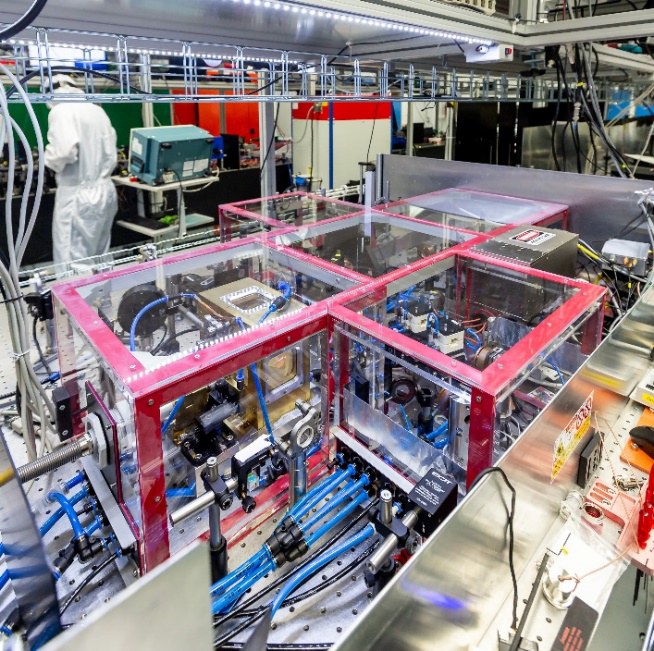
- Repetition rate: 50 kHz or 100 kHz (now optimized for 50 kHz)
- Pulse length: 1.5 ps up to 100 W (6 ps at 250 W)
- Energy: 5 mJ in compressed pulse (50 kHz)
- Beam diameter: approx. 4 mm (it can be modified)
- Wavelength: 1030 nm + 515 nm (up to 30 W/100 kHz/1 ps) + 257.5 nm (up to 4-5 W/100 kHz/1 ps)
- Polarization: linear
- Availability: 8 hours/day
- Long-term power stability: <1.2 % RMS over 6 hours
- Beam quality: M2 = 1.4 – 1.8, depending on output power
2(b) High repetition rate picosecond Perla B laser
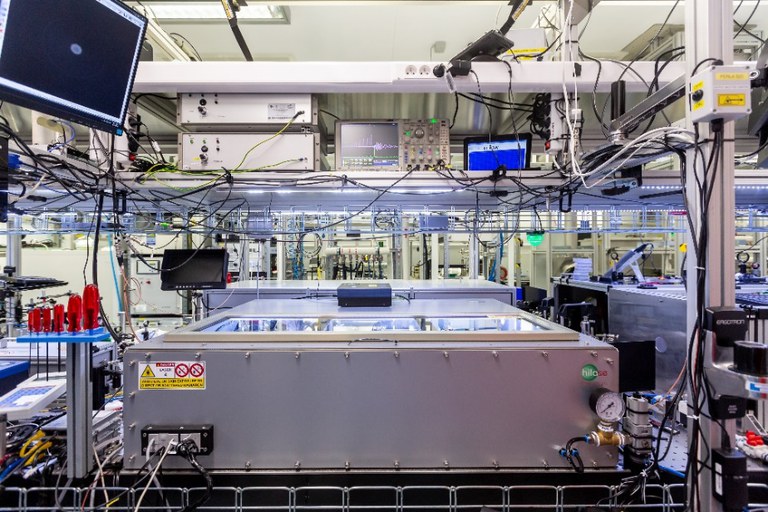
- Repetition rate: 1 kHz
- Pulse length: 1.3 ps
- Energy: 13 mJ
- Beam diameter: <4 mm (collimated, can be modified)
- Wavelength: 1030 nm + 515 nm (up to 4 mJ/1 kHz/1 ps/M2 = 1.5)
- Polarization: linear
- Availability: 8 hours/day
- Long-term power stability: <1 % RMS
- Beam quality: M2 = < 1.2
2(c) High repetition rate nanosecond DG laser
- Repetition rate: 1 kHz
- Pulse length: 1.4 ns
- Energy: 100 mJ
- Beam diameter: 8 mm (collimated)
- Wavelength: 1030 nm
- Polarization: linear
- Availability: 8 hours/day
- Long-term power stability: <1 % RMS
- Beam quality: M2 <2
3) Laser-Induced Damage Threshold (LIDT) target area 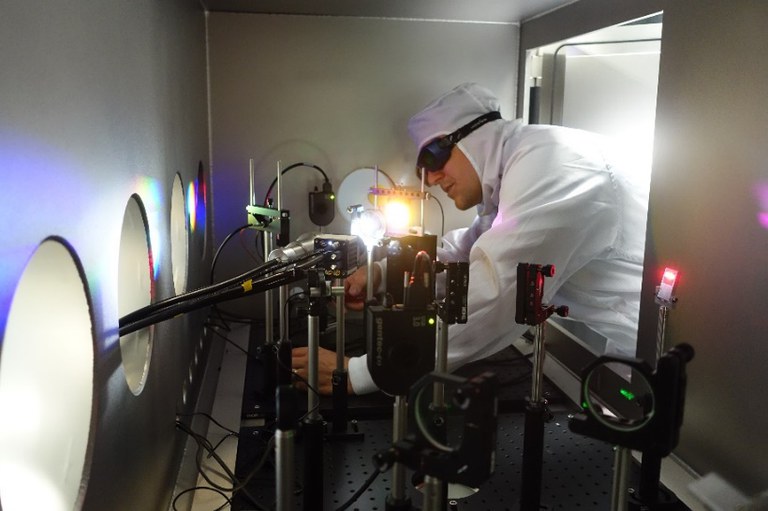
- ISO LIDT tests 1-on-1, s-on-1 type 1 and 2, r-on-1
- ISO 7 clean room environment
- Samples size up to 100x100x100 mm (it can be increased in special cases)
- Samples weight up to 1,5 kg
- Angle of incidence 0° to 60°
- Pulsed laser at 1030 nm and 515 nm, 10 ns, 10 Hz, up to 5 J @ 1030 nm and 2 J @515 nm
- 400 µm spot size round Gaussian or 3x3 mm2 square top-hat
- Pulsed laser at 1030 nm, 1.8 ps, 1 kHz, up to 10 mJ
- Variable spot size, round, Gaussian
- Online fast camera 1000 fps
- Post-test analysis with laser scanning microscope
4) Laser Shock Peening (LSP) target area
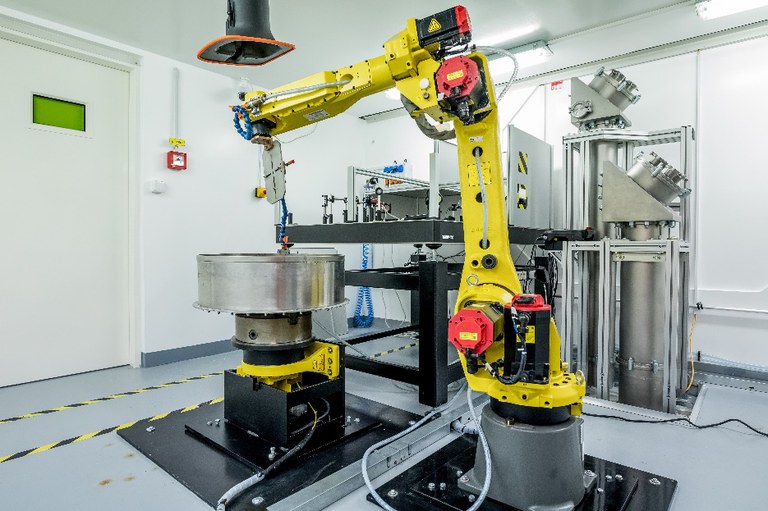
- Load capacity: 20 kg
- Max. workpiece size: 0.5 m
- Experience with these materials: Titanium alloys, stainless steel, aluminum alloys
- Beam size: up to 5 mm x 5 mm
- Productivity: up to 200 cm2/hour
- Results: uniform strengthening of the surface layer up to depth of 1 mm, extension of the lifetime of the component
- Testing methods: residual stress measurement by X-Ray diffraction and hole drilling (ASTM standard E 837), measurement of fatigue strength and material lifetime


